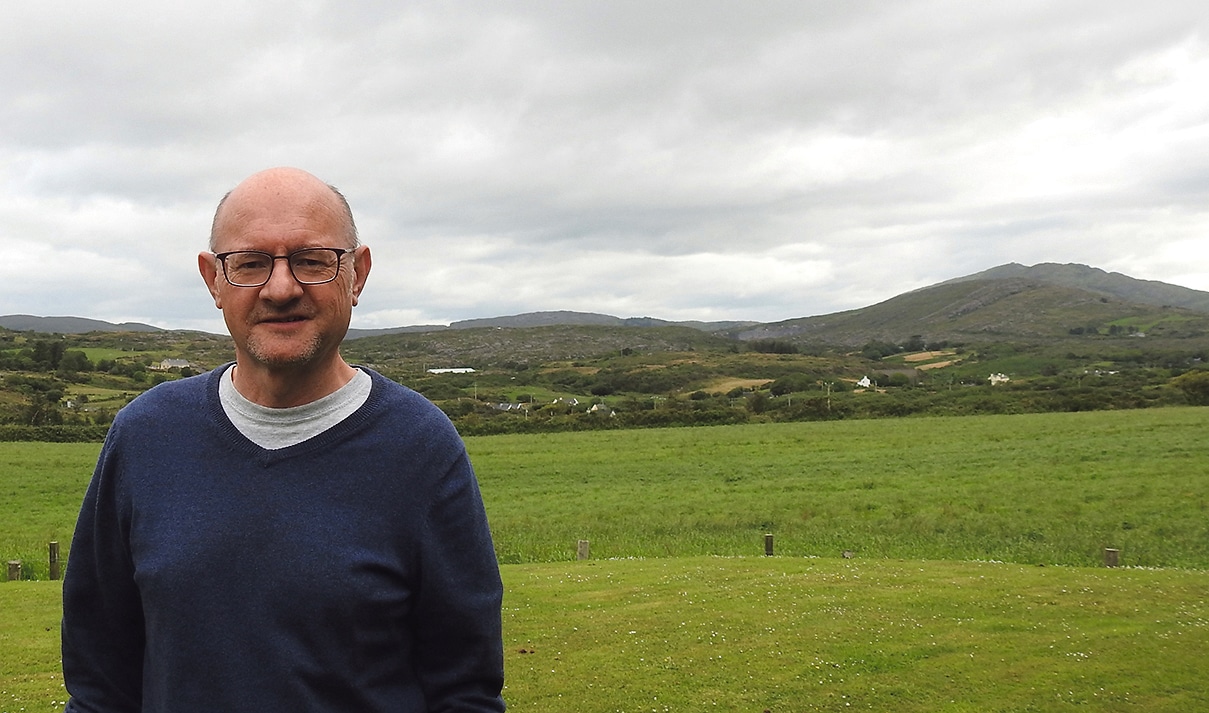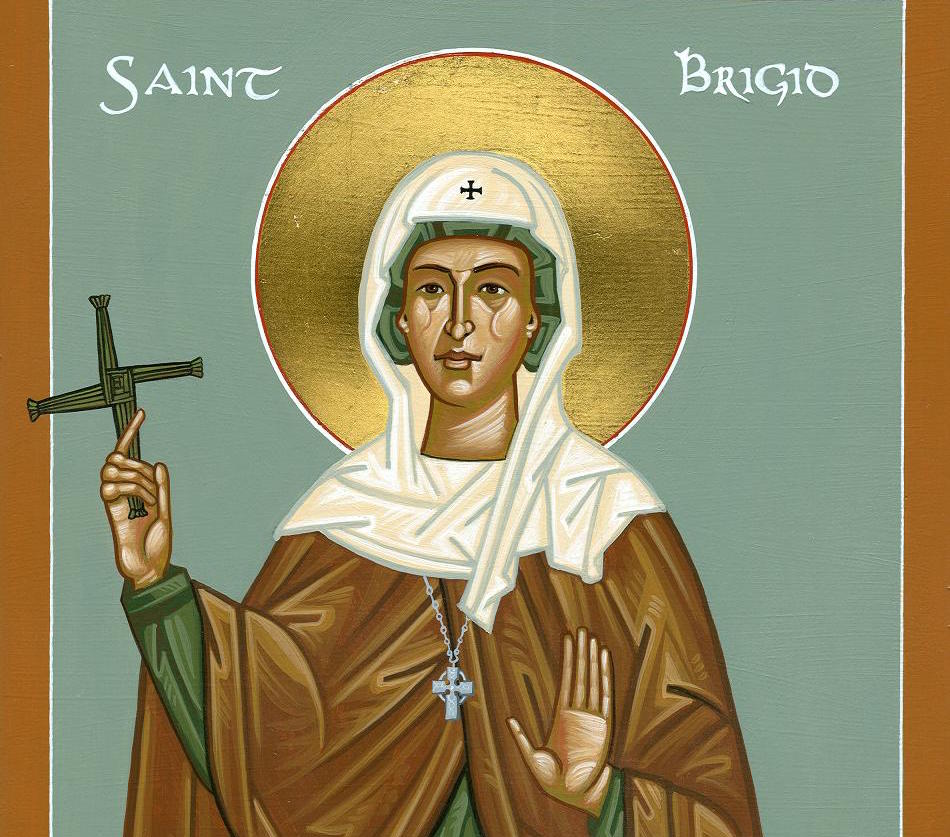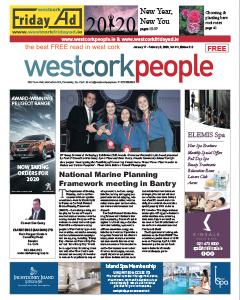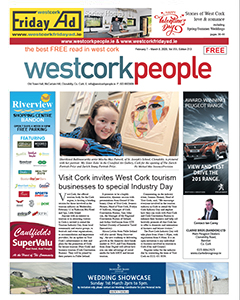Dr Pat Bracken is currently working as a consultant for the Department of Mental Health at the World Health Organisation in Geneva, researching and writing an international guide to good services and practices across the world. The consultant psychiatrist, who was Clinical Director of West Cork Mental Health Service from 2004 to 2016, is known for his more individual and broader approach to tacking mental health problems. He talks to Mary O’Brien about the importance of the creative arts in mental health and the challenges facing the mental health system in Ireland today.
Pat started his training in psychiatry in Cork back in the early 1980s. “While there were some really fine people working in the system, and I learned a lot from them, the service model was terrible and the conditions in which people were treated were pretty dismal. There was very little happening in the community,” he recalls.
Things have changed a great deal since then.
“The old asylums have closed and most mental health work is now done on an outpatient basis. I think the rise of what we call the ‘service-user movement’ has been transformative, and attitudes to mental health problems are gradually changing for the better.”
After finishing his training in the UK, Pat worked in Uganda for three years with victims of wartime violence and torture. He went on to become a consultant psychiatrist in Birmingham and Bradford and, from 2006-2008 a Professor of Philosophy, Diversity and Mental Health at University of Central Lancashire. He was one of the founders of the Critical Psychiatry Network in the UK twenty years ago. In 2004, he became Clinical Director of West Cork Mental Health Service.
“Although there are many really good people working in the mental health system in Ireland and conditions for patients have improved a great deal over the time I have been involved, service-users are telling us that there is a lot more to do and a great deal more to change about how we think about mental health issues and we respond to them,” says Pat.
“They are telling us that too often the only answer they get when they go for help is medication. While drugs ‘can’ be helpful, they are really only one part of what people need. Sadly, many service users say that that is all they are offered.”
In Pat’s experience, people recover from mental health problems along many different pathways and what will work for one person may not work for another.
‘We need to think imaginatively and creatively about how we help people find the path that will work for them. Drugs can be vital for one person but just a source of unpleasant side-effects for another. Psychotherapy can be important, but some people find talking about their problems to be unhelpful and painful. Feeling part of a community and connecting with other people is extremely important. The creative arts (music, singing, craft work, painting, drama and story-telling) can be liberating but so too can gardening, exercise, travel, religion and spirituality. When I worked in Africa I witnessed the power of traditional healing practices. Mental health services cannot provide all of these themselves but they should be working to open up connections with individuals and community groups that can.
Pat’s interest in the creative arts and what we call ‘mental illness’ started when he was a teenager. “The more I read in this area, the more I wanted to work with people who were going through different sorts of mental states. I chose the long route in, through medicine, but I got there in the end,” he explains.
He believes that we are only beginning to understand the value of the creative arts in the field of mental health. “At the moment, the creative arts are seen as a sort of ‘add-on’ to the ‘real’ work of mental health, which is about diagnosis, medication and maybe sessions of psychotherapy. I look forward to a time when this prioritisation is reversed and mental health work is seen to be ‘primarily’ about creativity, finding meaning and making connections, and the drugs, diagnoses and therapy are seen as secondary to this. The work at 49 North Street by Kevin O’Shanahan and his colleagues has been of vital importance for many people.”
In a recent interview, Pat talked about his work in Uganda and how the classical or typical theories of mental health had to take into account the local cultures in order to be effective. How does that relate to the Irish psyche?
“I don’t think I have an easy answer!” he says. I guess that I’m not convinced that we can talk easily about an ‘Irish psyche’ as such. However, we can never escape our history and I think that, in many ways, we are still grappling with post-colonial issues in Ireland and struggling to free ourselves from the sort of inferiority complex that comes with this. I think this fed the deference to authority that we saw through the 20th century, in relation to the Catholic Church and other institutions. Perhaps the results of our recent referendums are a sign that we are moving on.”
Over the course of his career, the biggest challenge has been the dominance of the pharmaceutical industry in the field of mental health and the narrow biomedical approach it has given rise to in his profession. However, as a mental health doctor, seeing people recover from crises and emerge stronger was always a joy he says. “That trumps everything else!”
During his time as Clinical Director of the Mental Health Service in West Cork, Pat says he was blessed with the colleagues he had during his time there and also felt privileged to be brought into the lives of the individuals and families he worked with over the years. “We have a wonderfully diverse community here in West Cork and my work was also varied and challenging.
“However, I think we all worked within a system that we didn’t design and that ultimately has its origins in the asylums of the last generation. It will take more time, effort and struggle to really free ourselves from that.” Pat retired early so that he would have time to work outside that system for a while.
Dr Pat Bracken lives in Schull with his wife Dr Joan Giller. The couple have four children. When he’s not working, he enjoys being involved with his local drama group.






